By Vanessa Loughty | September 6, 2023

See why top ecommerce brands use Miva’s no-code platform to run
multiple stores, manage massive catalogs, and grow their revenue.
Navigating the transition from SMB to midmarket is not as straightforward as simply collecting more orders and shipping more boxes. Systems that may have been adequate at the small business level might be not be able to handle increased volume. As the scale of operations expands, there must be a total strategic shift to accommodate growth of the buying audience, workforce, order volume, and revenue. In this blog, we’ll look at the different goals and challenges that go along with selling to the profitable middle third of all private sector receipts.
As an SMB, you might gradually come to find that your current systems and practices are no longer sufficient to meet the demands of a growing customer base. Signs of this include frequent stockouts, an overwhelmed customer service team, or an ecommerce platform that starts loading pages more slowly with increased traffic. Perhaps you have expanded from regional to national business, and now require more elaborate local warehousing, which in turn requires far greater ecommerce integration. Or maybe a business wishes to expand operations in order to take advantage of the discounted resource pricing which comes with greater scale. Recognizing these “growing pains” early can be the key to successfully transitioning from SMB to midmarket.
Midmarket selling operates in a unique space, bridging the gap between small businesses and large enterprises. In general, the midmarket is thought to comprise a third of the U.S. economy, and is characterized by business which earn between 10 million and 1 billion dollars in annual revenue. This position brings its own set of challenges:

Processing more orders, increasing sales, or expanding product lines are all great reasons to embrace larger scale. Businesses evolving from SMB to midmarket in fact have many ways to increase reach and profits over time, such as:
While some of these goals may be aspirational or longer term, the bottom line is that increased scale can enable business to serve their customers more effectively and more profitably. The flipside of added complexity is increased specialization—the ability to hone offerings to meet unique audiences as they arise.
Deciding whether or not to switch to a new ecommerce platform is a significant decision for any ecommerce business taking the leap from SMB to midmarket scale. We produced a thorough guide to replatforming here. Ecommerce platforms which are oriented to smaller businesses and teams generally do not have the customizable functionality required to support robust processes and growing audiences. These platforms tend to be “one size fits all” by design, as they are intended to serve a broad range of businesses which typically don’t have complex ecommerce needs. Signs that it might be time to switch ecommerce platforms include:
While replatforming can require an investment in time and resources, the payoff in terms of scalability and improved customer experience are well worth it.
Transitioning from SMB to midmarket requires re-orienting processes, software, and sales strategy to the complex needs of bigger audiences and sales volume. By recognizing the signs of growth early, taking an honest look at ecommerce platform capabilities, and selecting partners who are skilled at serving the needs of larger businesses and audiences, brands can start to enjoy the higher traffic, revenue, and rewards of scaling up.

Katy Ellquist, Miva’s Digital Marketing Strategist, is an accomplished writer, marketer, and social media analyst who has created sophisticated content campaigns for a broad range of professional clients. She brings to Miva a complex understanding of ecommerce trends and techniques, building upon extensive digital agency experience and a prior role as direct liaison to Miva’s top accounts. Katy is a regular contributor to the Miva blog, covering essential ecommerce topics like design & development strategy, site optimization, and omnichannel selling, with the goal of increasing the actionable knowledgebase of the entire Miva community.
Love it? Share it!
No worries, download the PDF version now and enjoy your reading later...
Download PDF Vanessa Loughty